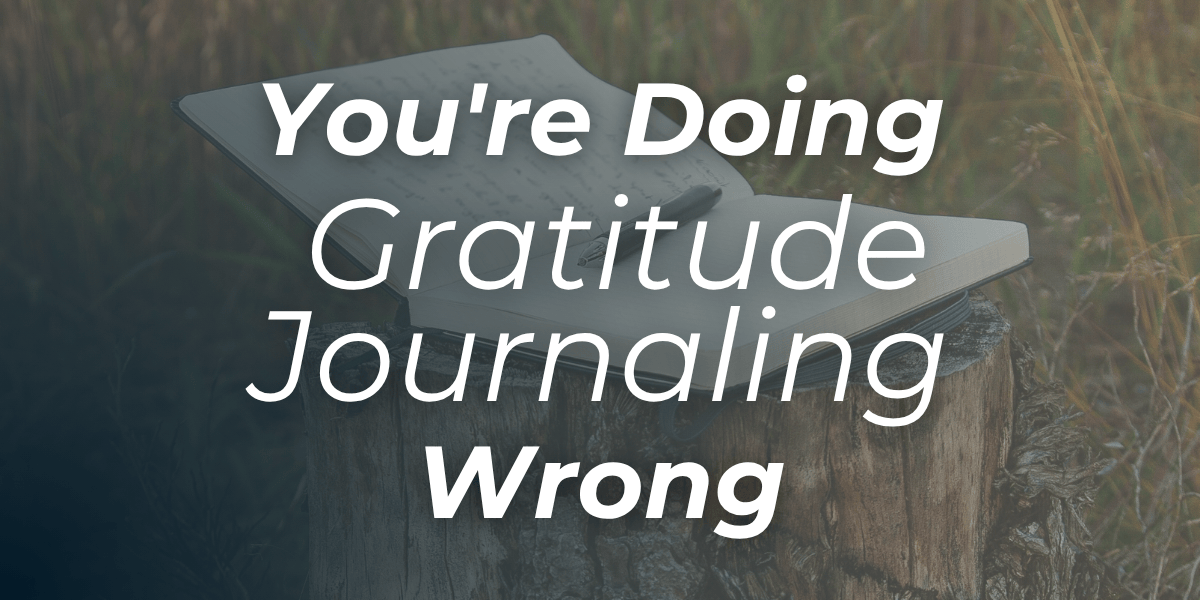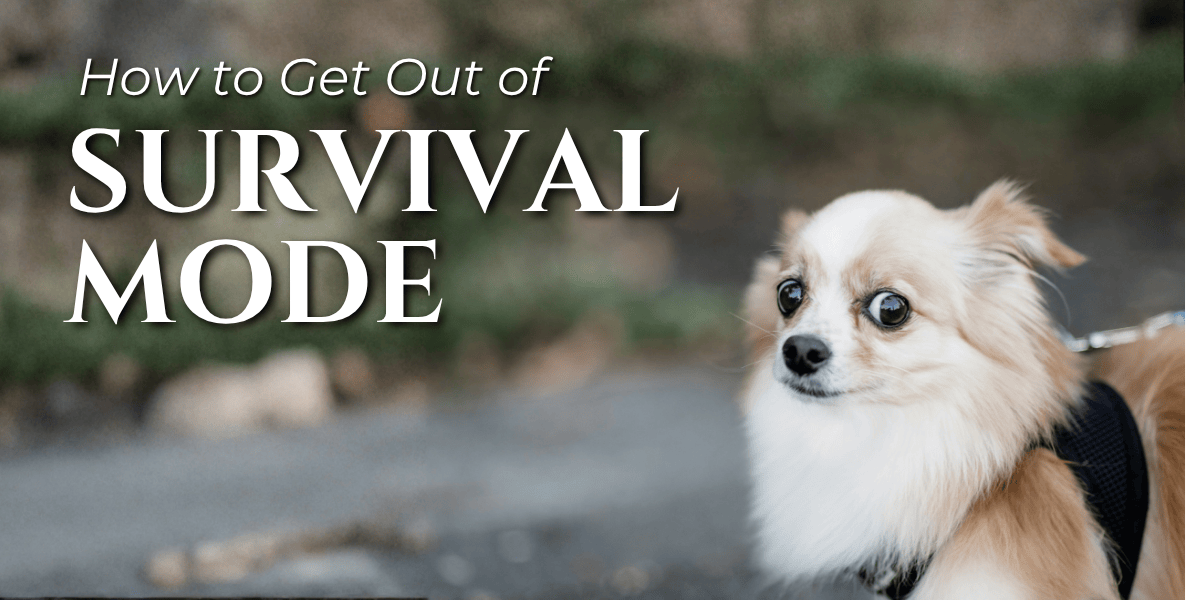Gratitude journals are ubiquitous these days. And although you're still getting some benefits from just listing out everything you're grateful for, you're still not getting the full effect.
You do not need more lists. You need a short practice that changes your body in real time, then carries momentum into the day. Tonight you can run a one to three minute gratitude rep that calms threat circuits, sharpens focus, and makes follow through feel easier.
One promise, one protocol. You will leave with a simple practice that uses story based gratitude, not generic lists, and you will know exactly how to run it.
What a Gratitude Journal Should Be
A gratitude journal is a short daily practice that tunes your attention to resources, wins, and the people who support you, so you act from a calmer, clearer state. That part stays.
Here is the upgrade: The practice works best when you focus on a brief story where gratitude is received, either by you or by someone else, and when you replay that story with sincerity. Lists can be nice, stories move the circuits that matter.
Narrative plus sincerity beats generic lists.
Why This Version Works (the neuroscience)
-
Narrative is the delivery system. Your brain organizes meaning through stories. A short story of receiving help or thanks lights up prefrontal networks tied to calm and motivation.
-
Receiving is powerful. Feeling genuine appreciation directed at you, or witnessing someone receive meaningful help, recruits the gratitude circuitry more reliably than reciting items.
-
Sincerity over magnitude. The giver’s honest intent matters more than the size of the benefit. Your nervous system can tell the difference.
-
Choice sets context. A chosen practice shifts state faster and sticks longer than a forced one.
-
Whole body effects are fast. Done correctly, people often feel a shift in minutes, lower threat reactivity, steadier breath, and more approach energy.
We can translate this into a repeatable protocol.
Let's dive a little deeper into the neuroscience.
Gratitude shifts state by recruiting two meaning and approach hubs, the anterior cingulate cortex and the medial prefrontal cortex. These regions help you assign significance, regulate attention, and lean into effort, which is why a brief story of receiving help or thanks works better than a generic list. A story supplies context, a who, a why, and a felt moment of sincerity, so these brain regions have something concrete to work with. Lists are abstract so they often miss intent. But your brain is tracking intent. When the narrative is specific and emotionally honest, these circuits engage, and motivation becomes easier to access.
This is also why sincerity beats size, and why we keep one anchor story for a while. Your system cares that the giver meant it, not how grand the gesture was. Repeating the same short scene strengthens the cue, which makes it faster to enter a useful state before you write.
If you're familiar with the 3 Powers, you'll understand why this is so important. It's the meaning that we focus on that changes how we process any experience. And then that shapes our reactions, our feelings, and our behavior.
The Anchor Story Protocol
Take a screenshot of this so you can save it for later.
Time: 1 to 3 minutes
Frequency: daily, mornings or evenings work well
Steps:
-
Choose one anchor story, a brief moment when you received genuine help or thanks, or a story where someone else did. Keep it emotionally honest and simple.
-
Write 3 to 5 bullet cues that bring it back fast, who helped, what they did, why it mattered, how their intent felt, what changed in your body.
-
Run the daily rep, read your bullets slowly, close your eyes for sixty to one hundred twenty seconds, replay the receiving moment, let the sincerity land.
-
Carry it forward, open your journal and finish these lines,
-
Today’s cue from my story was…
-
The intention I felt from the giver was…
-
The body shift I noticed was… breath, chest, heart rate
-
One way I will carry this forward is…
-
One person I will appreciate today is…
-
-
Repeat the same story for at least 30 days. Repetition builds a fast on ramp into the state.
Success looks like: you feel a small but clear body shift, calmer chest, slower exhale, easier focus, and at least one carry forward action.
Upgrade: once a week, reread or rewrite the story in a short paragraph, add one new concrete detail.
Troubleshoot: if you feel nothing, shorten the story, slow your exhale, pick a moment with stronger sincerity, do not force yourself to be grateful for things you dislike.
Inline quick win: if that protocol felt good, download the free 27 Journal Prompts for Greater Personal Clarity so you can pair the gratitude state with precise action.
Morning and evening rhythm
Morning (2-3min) read your bullets, feel the receiving moment, then answer:
-
One way I will carry this forward today is…
-
One person I will genuinely appreciate is…
Evening (2-3min), note:
-
What went right today and why
-
Who helped me and how I will acknowledge them
-
One small adjustment for tomorrow’s focus and energy
Bold truth, tiny reps compound when the bookends of your day match.
Five prompt sets you can plug in
These sets pair well with the Anchor Stor, so use them after your daily replay.
Calm Anxiety:
-
One place in my body that softened was…
-
One worry that shrank after the practice was…
-
One small action that keeps me steady is…
Strengthen Relationships:
-
One person I will appreciate today is…
-
The sincere intent I saw in them was…
-
I will express it by…
Build Work Focus:
-
One task I will start while the calm is fresh is…
-
I will remove this one friction for ten minutes…
-
Success for today looks like…
Reframe Tough Days
-
The moment that felt heavy was…
-
One resource or person that supported me was…
-
Next time I will…
Meaning and Purpose
-
The value that showed up in my story was…
-
Where that value fits in my week is…
-
One choice that aligns is…
Common mistakes and simple fixes
-
Mistake: vague entries. Fix: write specifics with time and place.
-
Mistake: listing without feeling. Fix: use the Anchor Story replay for one minute first.
-
Mistake: switing formats every few days. Fix: keep the same story for a month to build a strong cue.
-
Mistake: faking gratitude. Fix: pick a story with real sincerity, your system knows.
Remember, sincerity beats size, every time.
Combine gratitude with clarity journaling
Gratitude primes your system for the Three Powers.
-
Focus: the replay narrows attention to what's beneficial and enjoyable.
-
Meaning: the story assigns context and value, which changes how the same life feels.
-
Action: the carry forward line and the clarity prompts turn state into movement.
To learn about the 3 Powers and start regaining control of your life, watch our 3 Powers course here.
Run the Anchor Story, then use a clarity question to aim the energy,
-
What matters most in the next hour?
-
What friction can I remove in two minutes?
-
What would make progress obvious?
FAQ
Is listing three things enough?: Not as your core practice. Use a short story of receiving or witnessing help, then write one carry forward line. You could then write down 3 things from that story, memorize them, and then use them as a cue to remind yourself of the whole story.
How long until I notice a change?: Many people feel a shift in minutes, the habit compounds across a week. As you train your brain to make these shifts, it gets faster and better at making them.
What if I do not have a receiving moment?: Use someone else’s story that truly moves you, a scene from a letter, a talk, or a conversation.
How do I pick a good story?: Choose a moment with clear sincere intent from the giver, not a grand gesture, an honest one.






